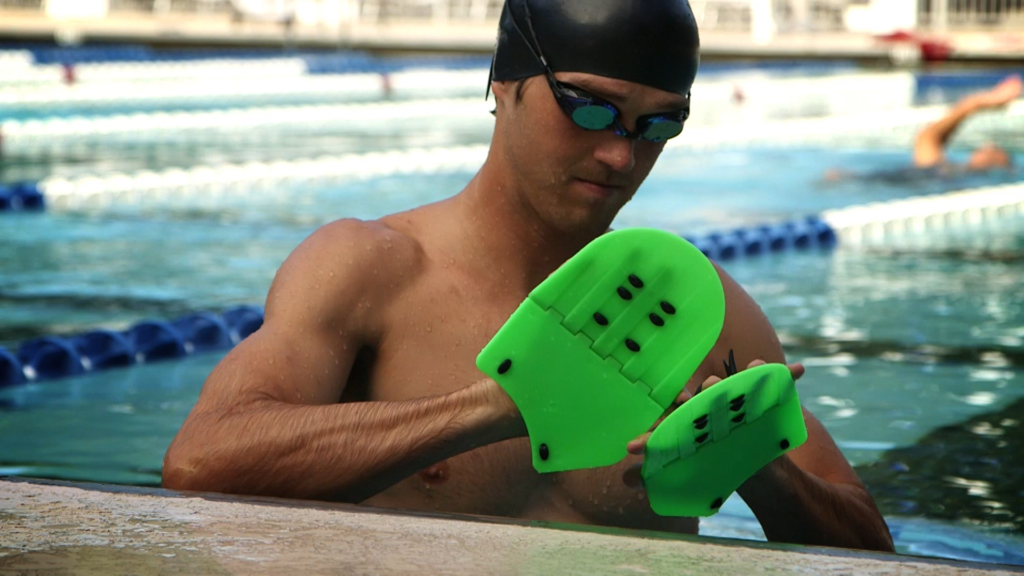Athletic Training Principles
The athletes of today are bigger, stronger, and faster than the athletes of even a decade ago. Advancements in nutrition and training techniques are responsible, in large part for the steady advancement of athlete’s physicality. Innovation in training equipment and specialized training tools help athletes become even more proficient in their respective sports and activities than their counterparts of even the recent past. The athletes who excel are ones who are blessed with a significant degree of natural ability and also keep abreast of the latest innovations in training and nutrition. With all the gains being made with respect to training equipment, nutrition, and specialized training techniques, there are some basic athletic training principles that never change.
Time Tested Training Principles
 Two principles of strength training remain constant. Lifting heavy weight with few repetitions is an effective way to build muscle strength and mass. Lifting light weight with many repetitions is also an effective way to build muscle strength. Also, exercising a muscle through its full range of motion develops more flexible and coordinated muscles and contributes to connective tissue health. Exercising a muscle or muscle groups through their full range of motion is more easily accomplished using the low resistance – high rep technique.
Two principles of strength training remain constant. Lifting heavy weight with few repetitions is an effective way to build muscle strength and mass. Lifting light weight with many repetitions is also an effective way to build muscle strength. Also, exercising a muscle through its full range of motion develops more flexible and coordinated muscles and contributes to connective tissue health. Exercising a muscle or muscle groups through their full range of motion is more easily accomplished using the low resistance – high rep technique.
Swimmer’s muscles not only need to be strong but they must also be flexible and coordinated and possess a high degree of stamina.
The light-weight high rep method is the principle behind strength training with hand paddles and is very effective in developing “SWIMMING STRENGTH”. Swim training with hand paddles follows another undisputed principle of athletic training. That being; “the best way to train for an athletic activity is the activity itself”.
This principle is especially applicable to competitive swimming. There is no way to become the very best swimmer one can be without swimming. And swimming with hand training paddles is the epitome, of the principle, “training in the activity itself”. Training with hand paddles encompasses three of the time – tested training principles mentioned earlier. The high rep relatively low resistance method of strength improvement, certainly the principle of “training in the activity itself” and, training the muscles through the full exact range of motion used in the swim stroke. Stamina, as mentioned earlier, is also a must for swimmers. Long pull workouts with paddles develops strong cardiovascular systems which plays a major role in developing stamina. For these reasons hand training paddles are one of if not the most important training tool a competitive swimmer can use.
 Hand training paddles have changed considerably over the years. Many different shapes and sizes of paddles have been developed in an attempt, to improve or accelerate the strength building aspect of the paddle as well as to improve stroke mechanics. truStroke swim training hand paddles with the patented hinge take paddle training to the next level. truStroke training paddles are simply the best and most comprehensive swim training paddle available with which to take advantage of the training principles discussed here and get the absolute maximum benefit from paddle training.
Hand training paddles have changed considerably over the years. Many different shapes and sizes of paddles have been developed in an attempt, to improve or accelerate the strength building aspect of the paddle as well as to improve stroke mechanics. truStroke swim training hand paddles with the patented hinge take paddle training to the next level. truStroke training paddles are simply the best and most comprehensive swim training paddle available with which to take advantage of the training principles discussed here and get the absolute maximum benefit from paddle training.
It is our opinion that the training principle of “training in the activity itself” is the most important training principle of all for any sport or activity. And we believe that consistently training with truStroke hand paddles will quickly and effectively improve any swimmers “swimming strength” and maximize stroke proficiency resulting in MAXIMUM DISTANCE PER STROKE and faster race results for swimmers of all levels.
WHAT AGE IS APPROPRIATE?
We believe that truStroke training paddles are so well designed that they can be a valuable training tool for younger swimmers as well when used for the purpose of developing stroke proficiency only. We do not recommend young “age group” swimmers use any hand training paddle for strength training purposes.
Before any “age group” swimmer begins training with truStroke training paddles, he or she should consult with and remain closely supervised by a sports oriented Orthopedic doctor familiar with swimming, a competent coach, and a trained exercise physiologist. If younger swimmers obtain this level of supervision, we believe that short ,(in terms of distance), low intensity, and closely supervised workouts, where the swimmer is using truStroke training paddles for the purpose of developing proficient stroke mechanics only, will advance the swimmer quickly in terms of stroke proficiency, and put him or her far ahead of the competition.
Work Hard! Train Smart! Swim Faster!
truStroke swim training hand paddles are designed to be used as a training tool, by competent, competitive, swimmers. truStroke hand paddles are not a lifesaving device nor are they designed for use as an instructional aid for non- swimmers.
Always use caution in the water. Consult with your Physician before beginning any exercise or training program.

